Can someone explain me the logic part? I kinda know it should work but I cant trace the code step by step, It doesnt make sense. Exchange among temp, pre, and Tail part is so confusing.
How does it run with the framerate? Is TailX[0] and TailY[0] always ahead? WHY? How do new tail parts get assigned in correct position? HELP ME.
using System;
using System.Threading;
namespace Projects
{
class Snake
{
public Random rand = new Random();
public ConsoleKeyInfo keypress = new ConsoleKeyInfo();
int score, headX, headY, fruitX, fruitY, nTail;
int[] TailX = new int[100];
int[] TailY = new int[100];
const int height = 20;
const int width = 60;
bool gameOver, reset, isprinted, horizontal, vertical;
string dir, pre_dir;
void ShowBanner()
{
Console.SetWindowSize(width, height + 6);
Console.ForegroundColor = ConsoleColor.Green;
Console.CursorVisible = false;
Console.WriteLine("!!####################################!!");
Console.WriteLine("!!####################################!!");
Console.WriteLine("!!####################################!!");
Console.WriteLine("!!####################################!!");
Console.WriteLine("!!####################################!!");
Console.WriteLine("!!########## Welcome ##########!!");
keypress = Console.ReadKey(true);
if (keypress.Key == ConsoleKey.Escape)
{
Environment.Exit(0);
}
}
void Setup()
{
dir = "Right";
pre_dir = "";
score = 0;
nTail = 0;
gameOver = false;
reset = false;
isprinted = false;
headX = width / 2;
headY = height / 2;
fruitX = rand.Next(1, width - 1);
fruitY = rand.Next(1, height - 1);
}
void CheckInput()
{
while (Console.KeyAvailable)
{
keypress = Console.ReadKey(true);
if (keypress.Key == ConsoleKey.Escape)
Environment.Exit(0);
if (keypress.Key == ConsoleKey.S)
{
pre_dir = dir;
dir = "STOP";
}
else if (keypress.Key ==ConsoleKey.LeftArrow)
{
pre_dir = dir;
dir = "LEFT";
}
else if (keypress.Key == ConsoleKey.RightArrow)
{
pre_dir = dir;
dir = "RIGHT";
}
else if (keypress.Key ==ConsoleKey.UpArrow)
{
pre_dir = dir;
dir = "UP";
}
else if (keypress.Key == ConsoleKey.DownArrow)
{
pre_dir = dir;
dir = "DOWN";
}
}
}
void Logic()
{
int preX = TailX[0];
int preY = TailY[0];
int tempX, tempY;
if (dir != "STOP")
{
TailX[0] = headX;
TailY[0] = headY;
for (int i = 1; i < nTail; i++)
{
tempX = TailX[i];
tempY = TailY[i];
TailX[i] = preX;
TailY[i] = preY;
preX = tempX;
preY = tempY;
}
}
switch (dir)
{
case "RIGHT":
headX++;
break;
case "LEFT":
headX--;
break;
case "UP":
headY--;
break;
case "DOWN":
headY++;
break;
case "STOP":
while (true)
{
Console.Clear();
Console.CursorLeft = width / 2 - 6;
Console.WriteLine("GAME PAUSED");
Console.WriteLine();
Console.WriteLine();
Console.WriteLine(" -S to resume ");
Console.WriteLine(" -R to reset ");
Console.Write(" -ESC to quit ");
keypress = Console.ReadKey(true);
if (keypress.Key == ConsoleKey.Escape)
Environment.Exit(0);
if (keypress.Key == ConsoleKey.R)
{
reset = true;
break;
}
if (keypress.Key == ConsoleKey.S)
break;
}
dir = pre_dir;
break;
}
if (headX <= 0 || headX >= width - 1 || headY <= 0 || headY >= height - 1)
{
gameOver = true;
}
else
{
gameOver = false;
}
if (headX == fruitX && headY == fruitY)
{
score += 10;
nTail++;
fruitX = rand.Next(1, width - 1);
fruitY = rand.Next(1, height - 1);
}
if (((dir == "LEFT" && pre_dir != "UP") && (dir == "LEFT" && pre_dir != "DOWN")) ||
((dir == "RIGHT" && pre_dir != "UP") && (dir == "RIGHT" && pre_dir != "DOWN")))
{
horizontal = true;
}
else
{
horizontal = false;
}
if (((dir == "UP" && pre_dir != "LEFT") && (dir == "UP" && pre_dir != "RIGHT")) ||
((dir == "DOWN" && pre_dir != "LEFT") && (dir == "RIGHT" && pre_dir != "RIGHT")))
{
vertical = true;
}
else
{
vertical = false;
}
for (int i = 1; i < nTail; i++)
{
if (TailX[i] == headX && TailY[i] == headY)
{
if (horizontal || vertical)
{
gameOver = false;
}
else
{
gameOver = true;
}
}
if (TailX[i] == fruitX && TailY[i] == fruitY)
{
fruitX = rand.Next(1, width - 1);
fruitY = rand.Next(1, height - 1);
}
}
}
void Render()
{
Console.SetCursorPosition(0, 0);
for (int i = 0; i < height; i++)
{
for (int j = 0; j < width; j++)
{
if (i == 0 || i == height - 1)
{
Console.Write("#");
}
else if (j == 0 || j == width - 1)
{
Console.Write("#");
}
else if (j == fruitX && i == fruitY)
{
Console.Write("F");
}
else if (j == headX && i == headY)
{
Console.Write("0");
}
else
{
isprinted = false;
for (int k = 0; k < nTail; k++)
{
if (TailX[k] == j && TailY[k] == i)
{
Console.Write("o");
isprinted = true;
}
}
if (!isprinted)
Console.Write(" ");
}
}
Console.WriteLine();
}
Console.ForegroundColor = ConsoleColor.Green;
Console.WriteLine(" YOUR SCORE : " + score);
}
void Lose()
{
Console.CursorTop = height + 3;
Console.CursorLeft = width / 2 - 4;
Console.WriteLine("YOU DIED");
Console.WriteLine(" R to reset");
Console.Write(" Esc to quit");
while (true)
{
keypress = Console.ReadKey(true);
if (keypress.Key == ConsoleKey.Escape)
{
Environment.Exit(0);
}
if (keypress.Key == ConsoleKey.R)
{
reset = true;
break;
}
}
}
void Update()
{
while (!gameOver)
{
CheckInput();
Logic();
Render();
if (reset)
break;
Thread.Sleep(30);
}
if (gameOver)
Lose();
}
static void Main(string[] args)
{
Snake snake = new Snake();
snake.ShowBanner();
while (true)
{
snake.Setup();
snake.Update();
Console.Clear();
}
}
}
}
